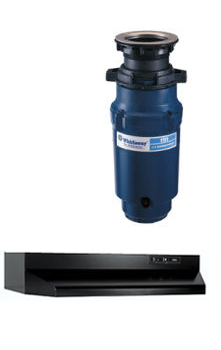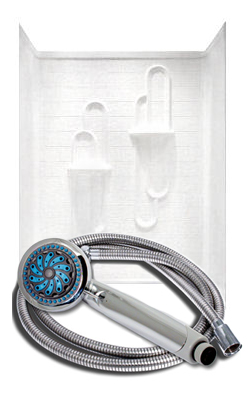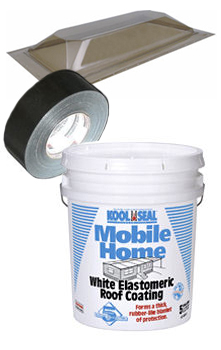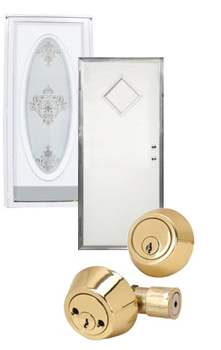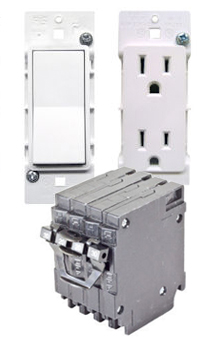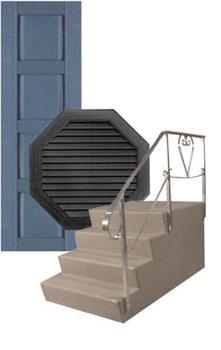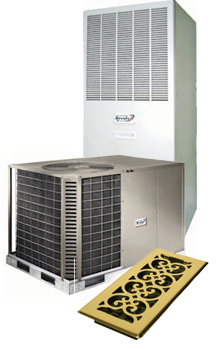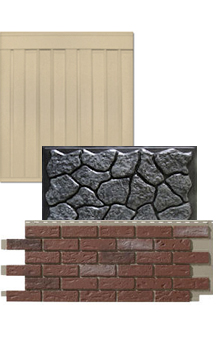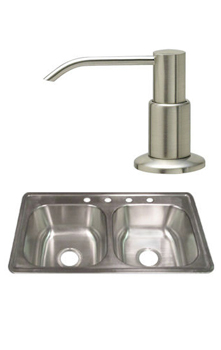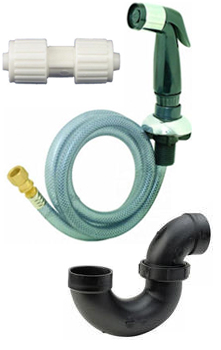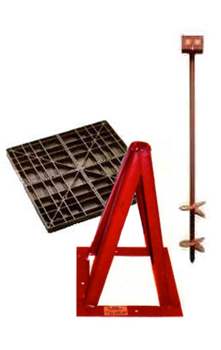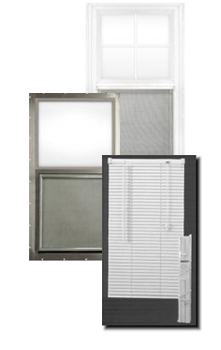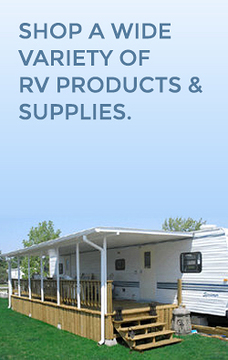
Nobody, and we mean nobody, likes starting up the shower on a cold morning only to discover there is no hot water. The frustration of no hot water can quickly turn a relaxing moment into an unexpected cold plunge. Hot water is essential to your daily routine, and when it stops working, it can feel daunting to fix. But what happens when you turn on the tap and nothing but cold water comes out? Don’t worry – we’ve got you covered!
We’ll dive into some easy-to-follow steps and solutions to get that hot water flowing again.
Common Causes of No Hot Water in a Mobile Home
Before we start troubleshooting, it helps to understand why you might be facing this issue in the first place. Mobile homes and/or manufactured homes have unique setups that can sometimes lead to problems with hot water. Knowing these can help you pinpoint the issue more quickly.
Common causes for your hot water woes:
- Power Supply Issues: One of the most common reasons for the lack of hot water is the power supply to the water heater. This can be due to a tripped circuit breaker, a blown fuse, or a disconnected power cord.
- Thermostat Settings: If the thermostat is set too low, the water heater won’t heat the water to the desired temperature.
- Sediment Buildup: Over time, sediment can build up in your water heater. This can affect the heater’s efficiency and eventually lead to no hot water.
- Faulty Heating Element: Electric water heaters have heating elements that can wear out or break over time. If one or both of these elements fail, you won’t get hot water.
- Age of the Water Heater: Water heaters have a lifespan like all appliances. If your water heater is old, it may be time for a replacement.
Troubleshooting Your Hot Water Heater
Let’s move on to troubleshooting your hot water heater. Follow these steps to identify and possibly fix the issue yourself.
Check the Power Supply
First, ensure that your water heater is getting power. Check your home’s circuit breaker or fuse box. If a breaker has tripped or a fuse has blown, reset the breaker or replace the fuse. Also, check the power cord to make sure it’s securely plugged in.
Verify Thermostat Settings
Next, check the thermostat settings on your water heater. Make sure it’s set to the appropriate temperature. The recommended setting is usually between 120 and 140 degrees Fahrenheit. If the thermostat is too low, increase the temperature to see if this resolves the issue.
Inspect the Heating Elements
If your water heater is electric, the heating element could be causing the issue. First, make sure to turn off the water heater’s power. Then, use a tool called a multimeter to test the elements for continuity. If the multimeter doesn’t show a reading, it means your heating element is faulty and needs to be replaced.
For gas water heaters, they have a pilot light—a small flame that lights the burner when hot water is needed. If the pilot light has gone out, you’ll need to relight it. The process for relighting will vary based on your water heater’s model. Look for instructions on how to relight the pilot light. You might find them attached to your water heater or on the manufacturer’s website.
Look for Sediment Buildup
Sediment buildup is a common issue in water heaters, especially in areas with hard water. Over time, minerals like calcium and magnesium become tiny particles settling at the tank’s bottom.
When this happens, you might notice some problems, such as:
- Water temperatures change from very hot to lukewarm.
- Higher energy bills.
- Less hot water is available.
- Rumbling or popping noises when the water heater is running.
These issues arise because sediment buildup makes it hard for your water heater to keep a steady temperature and decreases its energy efficiency. If the buildup gets worse, it can take up space in the tank, clog the drain valve, block water lines, or even lead to the tank failing early. Flushing your tank regularly can help prevent these problems. We’ll cover how to do this in detail next.
How to Flush Out Sediment Buildup
Sediment buildup can be a real pain. Here’s how you can flush it out:
- Turn Off the Heater: Turn off the power at the circuit breaker for electric heaters. For gas heaters, put the gas burner on “pilot,” then close the tank’s cold water supply valve. Wait several hours to allow the stored hot water to cool down.
- Connect a Hose: Attach a garden hose to the drain valve and place the other end in the bathtub, laundry tub, or floor drain.
- Drain the Tank: Open the valve and let the water (and sediment) flow out. Be careful, as the water might still be hot!
- Flush the Tank: Once drained, close the drain valve and turn the cold water supply back on for a few minutes or until the tank is partially filled. Repeat the draining process until the water runs clear.
- Refill the Tank: Close the drain valve, remove the hose, and turn the water supply back on. Remember to turn the power or gas supply back on to start heating water again!
Addressing Common Water Heater Issues
Even after troubleshooting and flushing the tank, you might still encounter issues. Here are some common problems with mobile home water heaters and how to address them:
 Temperature Pressure Valve (TPR) Issues
Temperature Pressure Valve (TPR) Issues
The TPR valve is a safety feature that lets water out of the tank if the pressure gets too high. If this valve isn’t working and doesn’t shut off at the right temperature, your water heater can stop working altogether. If you see dampness under the discharge line, it might be faulty and need replacement.
If the TPV is faulty:
- Turn Off Power/Gas: Turn off the power or gas supply.
- Drain Some Water: Drain a bit from the tank to reduce pressure.
- Replace the TPV: Unscrew the old valve and screw in the new one.
- Refill the Tank: Turn the water supply back on and check for leaks.
Rust and Corrosion
Rust and corrosion often sneak up on you, and you might not notice them until your water heater starts leaking. One big sign that something’s wrong is if the water looks discolored. If the tank itself is rusted, it might be time for a new one. However, this could also be a sign your anode rode is failing.
Failing Anode Rod
The anode rod helps protect your water heater from rust and corrosion. Over time, however, it will deteriorate and need to be replaced. If it’s not, the water heater may rust and eventually fail.
Here’s how to replace the anode rod:
- Turn Off Power/Gas and Water: Make sure the power or gas and the water supply are off.
- Drain the Tank: Drain a little water from the tank.
- Locate the Anode Rod: If needed, unscrew and lift off the cover from the top of the heater.
- Remove the Old Anode Rod: Use a ratchet wrench and a 1 1/16-inch deep socket to unscrew the old anode rod. Lift it out and throw it away.
- Install the New Anode Rod: Wrap Teflon tape around the threads of the new anode rod, then insert it into the water heater and tighten it with the 1 1/16-inch socket.
- Refill the Tank: Turn the water and fuel supply back on.
Damaged Burner Assembly or Gas Control
A gas water heater has a part called the burner assembly instead of an electric element. If you’re not getting enough hot water or none at all, the issue might be with the burner assembly or the gas control valve. The gas burner is just one part of the burner assembly, which also includes the thermocouple, main orifice, main gas supply tube, pilot burner, pilot orifice, and pilot burner gas supply.
If any of these parts are clogged or not working right, the whole system won’t function properly. Over time, these components can wear out and may need replacing. If you think there’s a problem, it’s best to call a professional for help.
Age of the Water Heater
Like anything, the age of your water heater can affect how well it works. If your water heater is more than 10 to 15 years old, it might be time to think about replacing it. As it gets older, the parts inside can wear out and become less effective.
Seeking Professional Help
Sometimes, no matter how hard you try, you might not be able to solve the problem by yourself. When that happens, it’s a good idea to call in a professional. Experts have the knowledge to tackle tricky issues that go beyond simple fixes. They can quickly figure out what’s wrong and offer the right solutions.
Here’s when you should reach out to a pro:
- Persistent Problems: If you’ve tried the above steps and still have no hot water, it’s time to call in the experts.
- Complex Issues: Issues like significant corrosion, gas control problems, or anything involving complex electrical work should be handled by a professional.
- Safety Concerns: If you’re ever unsure or uncomfortable with a repair, don’t risk it.
How to Find Reputable Professionals
Finding a trustworthy professional is key. Here are some tips:
- Ask for Recommendations: Check with friends, family, or neighbors for trusted professionals.
- Read Reviews: Look for online reviews and ratings.
- Check Credentials: Make sure they’re licensed and insured.
- Get Multiple Quotes: Don’t settle for the first quote. Compare a few to get the best deal.
Get Your Mobile Home’s Hot Water Flowing Again
Having no hot water in your mobile home can be a major inconvenience. Still, with a bit of troubleshooting, you can often identify and fix the problem yourself. From checking the power supply and thermostat to flushing out sediment and addressing common issues, there are several steps you can take to get your hot water flowing again. However, if the problem persists or seems too complex, don’t hesitate to seek professional help.
If you find yourself needing parts or tools to help with your repairs, consider shopping at Mobile Home Parts Store. We offer a wide range of quality products specifically designed for mobile and manufactured homes, ensuring you get the right solutions to keep your home running smoothly. With their helpful customer service and easy-to-navigate website, you’ll find everything you need to restore your hot water and enjoy comfort in your home once again. Don’t let a cold shower ruin your day—visit Mobile Home Parts Store today!
Tags: manufactured home, mobile home, mobile home plumbing, mobile home repair, mobile home water heater, Water Heater Repair


